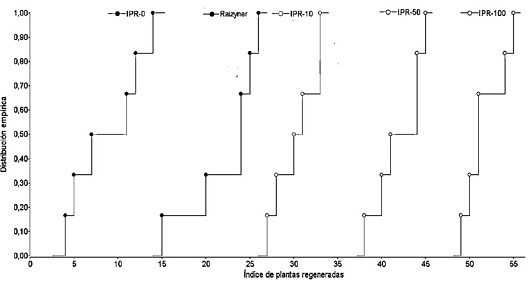Oligogalacturonide dose optimization on the vegetative propagation of two cocoa clones (Theobroma cacao L.) under controlled conditions in the nursery
DOI:
https://doi.org/10.28940/terra.v41i0.1648Keywords:
plant quality, chemical rooting, plant morphology, rooting substanceAbstract
The low ef ficiency of cocoa vegetative propagation from cuttings requires the use of rooting agents. This situation motivated a study whose objective is to optimize the oligogalacturonide dose on the vegetative propagation of two cocoa clones under controlled conditions in the nursery. The source of oligogalacturonides was provided in doses: 0, 10, 50 and 100 mg L-1 compared to the chemical rooting (composed of: 7% nitrogen, 45% phosphorus, 5% potassium, 0.1% boron, 3% metabolic activators and 10% marine algae), which was applied by immersion at the base of the cutting. The clones tested were CCN-51 and EET-801. The evaluated variables were: number of leaves and roots, radical fraction, fresh biomass of leaves and roots, dry biomass of leaves, roots, and stem and index of regenerated plants. The results indicated that the doses of 50 and 100 mg L-1 showed the greatest ef fects on the number of leaves (NH), radical fraction (FR), dry biomass of the leaf (DSB) and stem (DST). Clone CCN-51 showed higher NH, FR, BSH and BST than EET-801 (P < 0.05). In number of roots (NR), fresh root biomass (BFR), dry root biomass (DRB), fresh leaf biomass (BFH) and the index of regenerated plants (IPR), the clones were the same. The IPR had a positive correlation with the other variables (P < 0.05). Using 85 mg L-1 of chemical rooting an IPR of 49.1% can be achieved. The IPR can be predicted based on the variables BFR and BFH with R2 = 0.96.
Downloads
Publication Facts
Reviewer profiles N/A
Author statements
- Academic society
- Terra Latinoamericana
- Publisher
- Mexican Society of Soil Science, C.A.

















